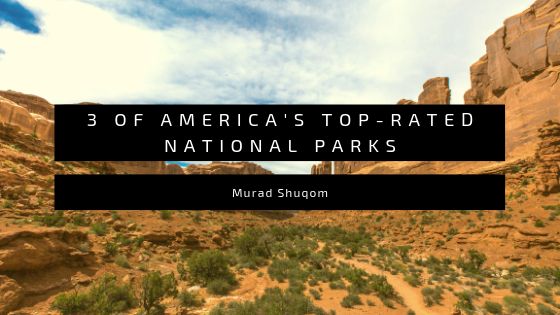Each year millions of people flock to America’s top-rated national parks to take in the majestic beauty they offer.
Yosemite National Park
Natural wonders and awe-inspiring views draw 4.3 million visitors each year to California’s Yosemite National Park. The almost 1,200 square mile park features valleys, meadows, waterfalls, rock formations, and giant sequoias. The park is home to El Capitan, the world’s largest granite monolith, and to Yosemite Falls. With a drop of 2,425 feet, it’s the tallest waterfall in North America. Although the 750 miles of trails give hikers plenty to explore, visitors who don’t want to explore on foot can take a bus tour from Yosemite Valley. Of the 13 campgrounds, four are open year round. Fishing, swimming, boating, rock climbing, horseback riding, stargazing, and bird watching are activities that Yosemite visitors can enjoy.
Grand Canyon National Park
The upper level of Arizona’s Grand Canyon National Park is divided into the open year-round South Rim and North Rim, which closes for winter. The canyon is 227 river miles long and one mile deep. Some visitors choose to remain on the rim. They can take in the canyon from the overlook points located along the rim. On the south rim, famous Mather Point is at 7,000 feet elevation. Visitors can go below the rim into the canyon by mule, by boat, or on foot. Also, they can see the canyon from above the rim via Skywalk at Eagle Point, a glass bridge that’s 4,000 feet above the bottom of the canyon.
Yellowstone National Park
Covering parts of Wyoming, Montana, and Idaho, the natural beauty of America’s first national park encompasses much more than the famous geyser Old Faithful. While Yellowstone National Park is home to about 50 percent of the world’s hydrothermal features, the park also has its own Grand Canyon. Created by erosion from the river’s flow, the Grand Canyon of the Yellowstone River spans approximately 20 miles. Steam from the area’s hydrothermal activity bursts from the canyon walls. Yellowstone Lake is 20 miles long and 14 miles wide and contains North America’s largest population of cutthroat trout. Fishing, boating, and camping are accessible, however, swimming is dangerous due to the lakes year-round average temperature of a mere 41 degrees Fahrenheit.

